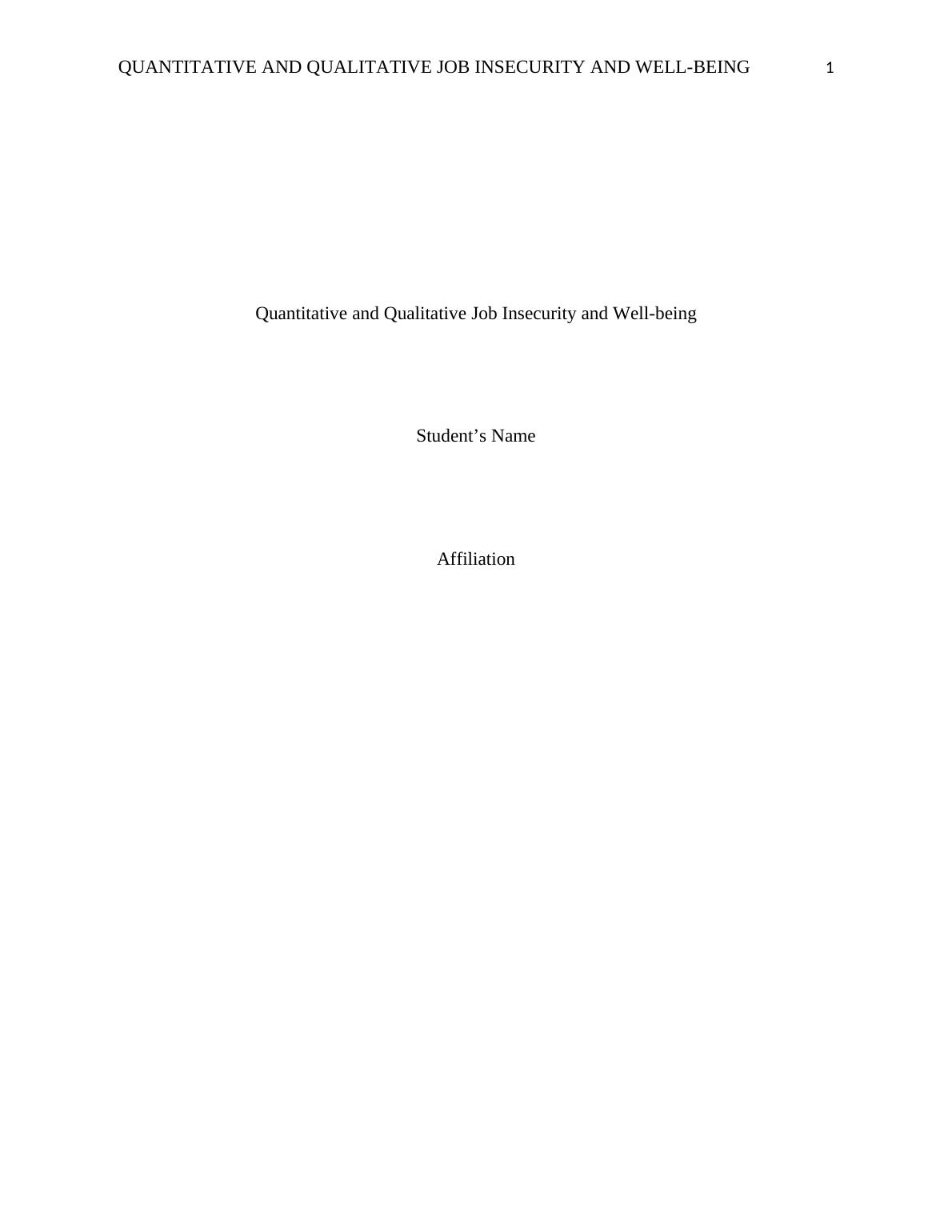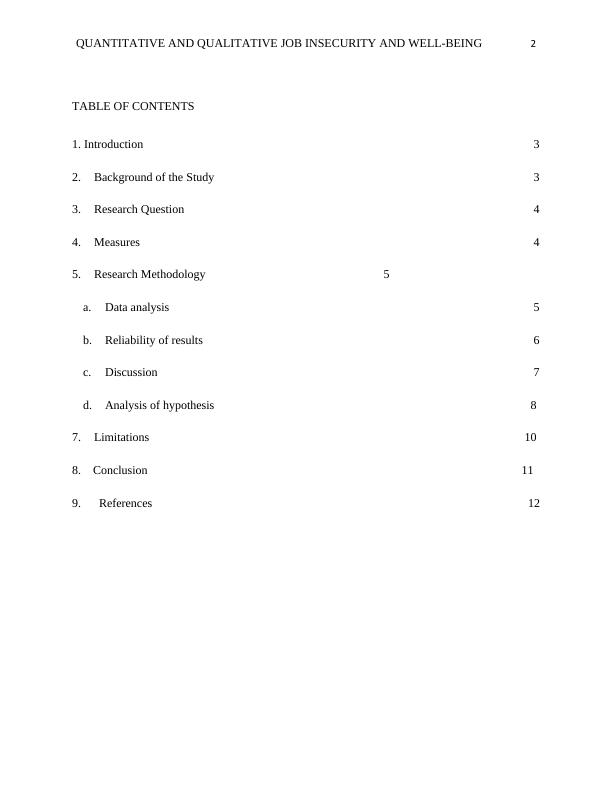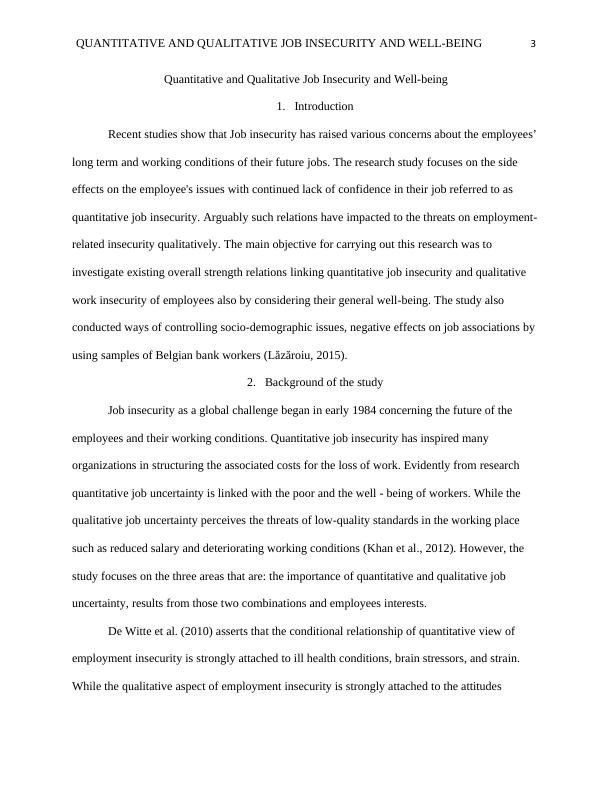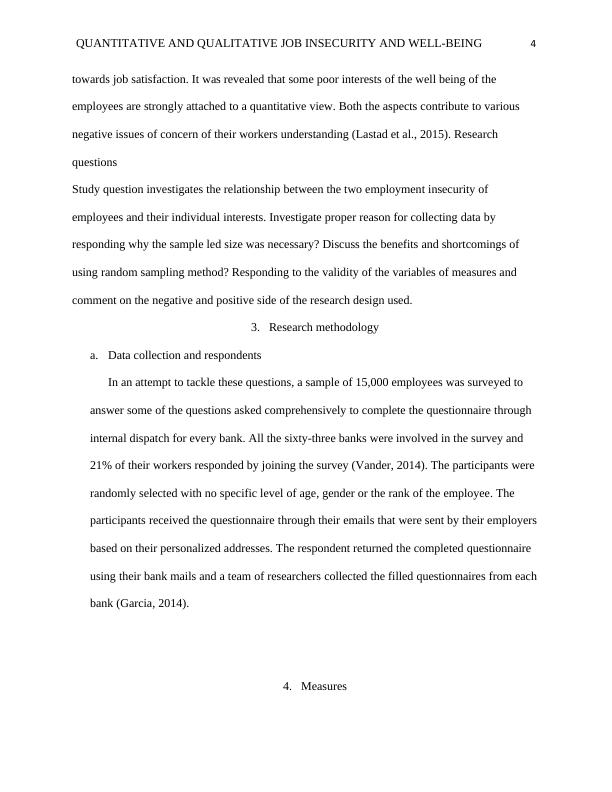Quantitative and Qualitative Job Insecurity and Well-being
Investigation of the association between employee's perception of quantitative and qualitative job insecurity with job satisfaction and psychological distress in the Belgium banking sector.
12 Pages2655 Words76 Views
Added on 2023-01-19
About This Document
This research study focuses on the side effects of quantitative and qualitative job insecurity on employee well-being. It investigates the relationship between job insecurity and employee interests, and explores the measures and research methodology used. The study also discusses the limitations and provides conclusions based on the findings.
Quantitative and Qualitative Job Insecurity and Well-being
Investigation of the association between employee's perception of quantitative and qualitative job insecurity with job satisfaction and psychological distress in the Belgium banking sector.
Added on 2023-01-19
ShareRelated Documents
End of preview
Want to access all the pages? Upload your documents or become a member.
Associations between Quantitative and Qualitative Job Insecurity and Well-being
|3
|1328
|148
BUACC5931 Associations Between Quantitative and Qualitative Job Insecurity and Well-being Assignment 2022
|6
|3448
|22
Influence of Job Insecurity on Employees in UK (Doc)
|7
|899
|138
Research and Statistical Method For Business INTRODUCTION
|10
|3006
|342
Mental Health and Work Attitude of People on Post-COVID-19 in the IT Sector in Bangalore
|10
|549
|60
Explaining the Concept of Zero-Hour Contracts: Benefits, Drawbacks, and Recommendations
|5
|808
|255




